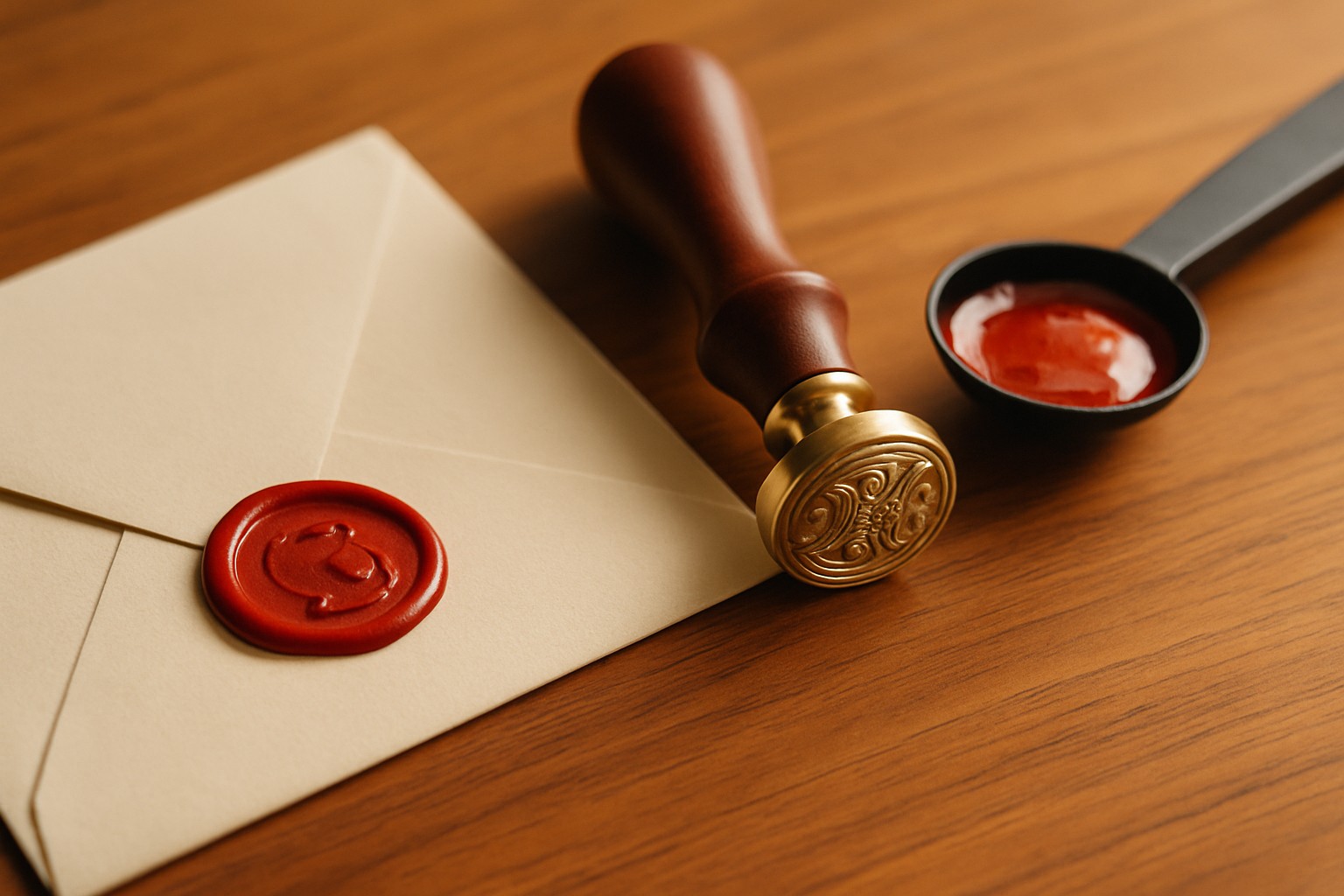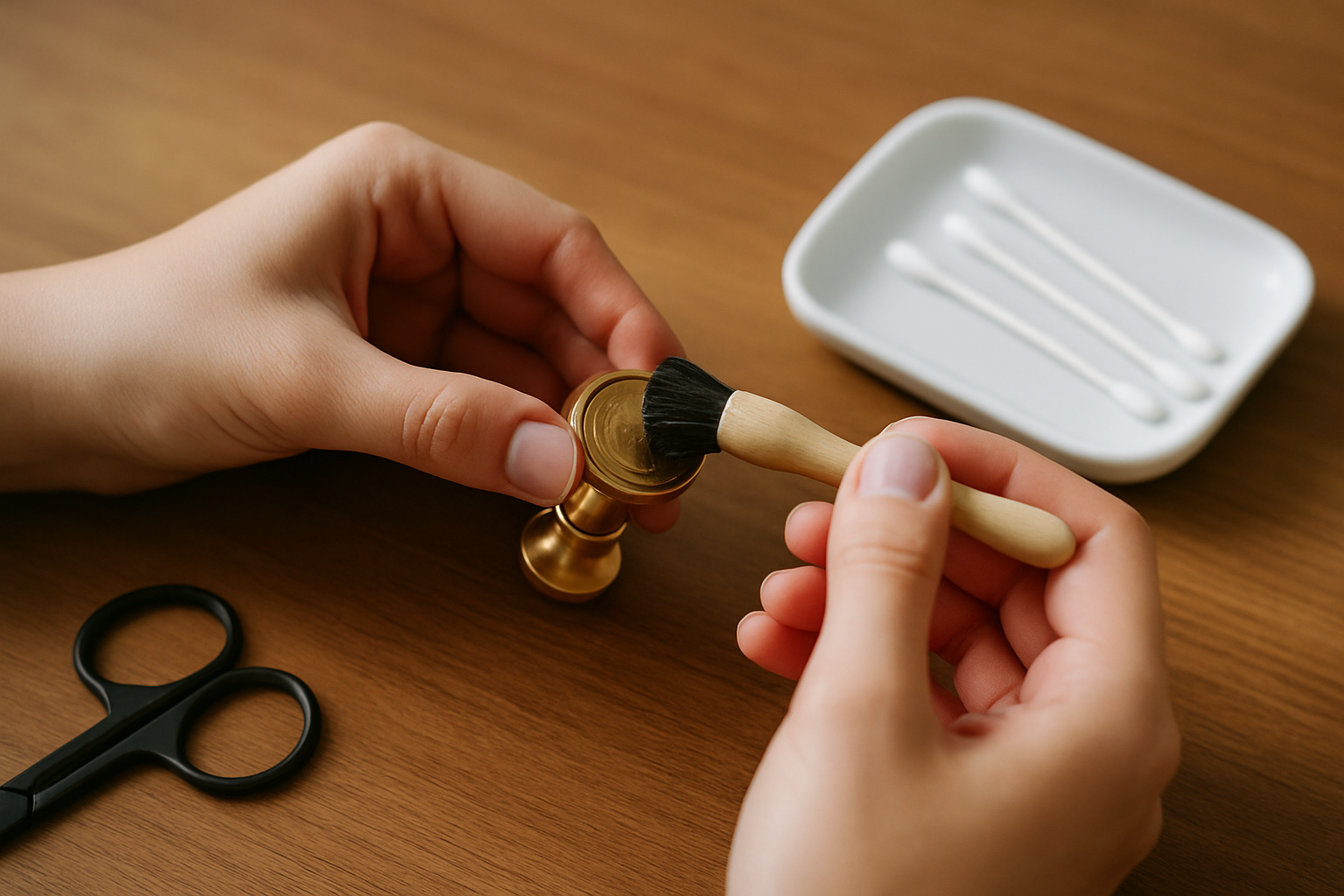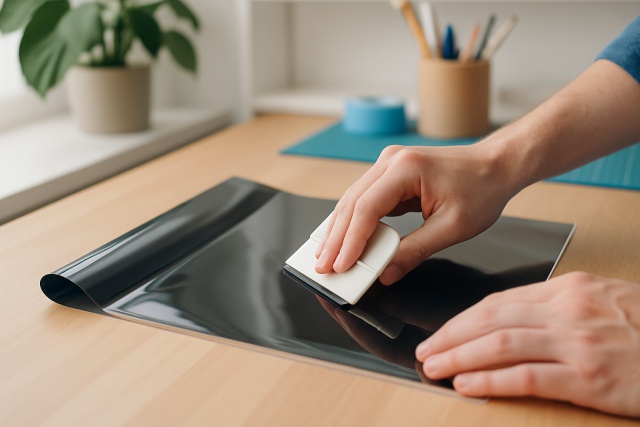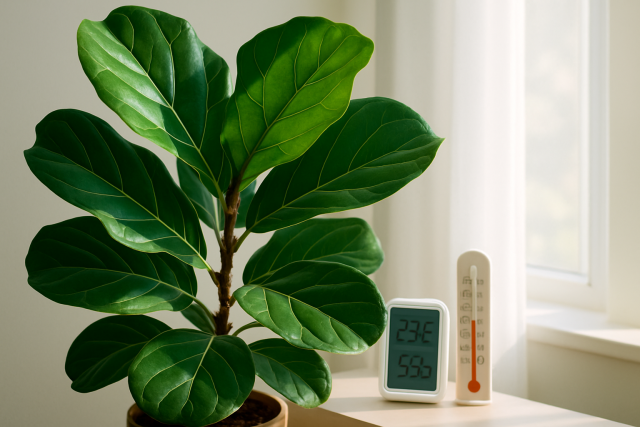How to Clean and Maintain Your Metal Seal Stamp

This guide takes you by the hand and shows you how to keep your metal seal stamp in tip-top shape so it performs flawlessly for years to come.
- Discover how to gently clean your stamp using safe tools like soft brushes and isopropyl alcohol because a delicate touch goes a long way.
- Uncover the essential supplies that keep your stamp looking sharp and help it avoid wear and tear over time.
- Follow straightforward steps to tackle stubborn wax and ink without risking your engraving—no scary scrapes here.
- Pick up handy tips for storing your stamp so it stays cozy and protected from dust, moisture and corrosion.
Metal seal stamps are classy little tools designed to create embossed wax seals or crisp ink impressions on letters and documents as well as craft projects. They’re quite the favorite especially in home offices and among hobbyists who appreciate a touch of tradition.
What You Absolutely Need to Know About Your Metal Seal Stamp
A metal seal stamp is made of key parts designed for lasting quality and accuracy. Typically the seal face uses materials like brass, steel or copper while the handles come in wood or metal each lending its own charm.
- Seal face The engraved metal part that creates the design impression. It is the real star of the show here.
- Handle Usually crafted from wood, metal or resin. It is designed to feel good in your hand because comfort counts when you are stamping away.
- Metal type Typically brass, steel, copper or various alloys. This choice impacts durability and how you’ll want to treat it when cleaning since a little care goes a long way.
- Hinge mechanism Found in some self-inking or folding stamps. This clever feature makes them easier to use and saves you some elbow grease.
- Ink type compatibility Knowing if your stamp plays nicely with wax, ink or embossing is key because it changes how you’ll need to clean and maintain it.
Essential Tools and Supplies You’ll Want When Cleaning Your Metal Seal Stamp
- Soft bristle brush: Perfect for gently brushing away dust and ink residue without putting a scratch on your precious surface.
- Mild liquid soap: A trusty gentle cleaner that is safe to use on metal parts without any nasty side effects.
- Microfiber or lint-free cloths: Your go-to for wiping things down smoothly, no scratches guaranteed.
- Warm water: Great for loosening up dried ink or wax—think of it as a cozy bath for your stamp.
- Cotton swabs or Q-tips: Handy little tools that reach into those tiny crevices where dust loves to hide.
- Isopropyl alcohol: Tough on stubborn dried ink but kind to your metal by avoiding any corrosion drama.
- Mineral oil or light machine oil: Just the ticket for keeping moving parts slick and happy when they need a bit of love.
- Airtight storage box or pouch: The perfect hideout to shield your stamp from dust and moisture once you’ve given it a good clean.
You’ll want to avoid harsh chemicals since they’re notorious for causing corrosion or that frustrating tarnish nobody wants.
A Straightforward Guide to Cleaning Your Metal Seal Stamp Without Any Fuss
Set up your workspace by laying down a soft cloth and gathering all the cleaning supplies you will need so nothing catches you off guard.
Gently brush the stamp face with a soft brush to clear away any leftover ink or wax. Take your time here and do not rush.
Dip a cotton swab in warm, soapy water and carefully clean the engraved areas. Be sure not to press too hard or risk damage.
If stubborn stains won’t come off, lightly moisten a cotton swab with isopropyl alcohol and dab the spots gently. Patience is key.
Wipe both the seal face and handle clean with a damp microfiber cloth, giving your stamp a little spa treatment.
Dry everything thoroughly using a dry, lint-free cloth to prevent any moisture buildup that could cause trouble later.
Give the stamp a thorough once-over for any signs of wear or damage before tucking it away safely. It’s better to be safe than sorry!
Be careful not to scrub too hard or use abrasive tools because they can easily damage the intricate engraving on the seal face, which you definitely want to avoid. If the ink or wax has become stubborn and hardened, avoid using metal tools for scraping since they tend to cause more harm than good. Instead, soaking the seal briefly in warm soapy water usually helps to loosen things up. For especially stubborn dried ink, a few gentle cleanings with alcohol can be very effective.

Tips for Keeping Your Metal Seal Stamp in Great Shape (Because Nobody Likes a Worn-Out Clunker)
- Set up a regular cleaning routine ideally after every 5-10 uses to keep residue from piling up and causing trouble.
- Store your stamp in an airtight container or pouch. This trick guards it against moisture and dust.
- Lightly dab some mineral oil on the moving parts or hinges to help everything glide smoothly.
- Do your best to steer clear of extreme temperatures or humidity because they can cause warping or corrosion.
- If you notice cracks, loose bits or serious wear and tear, it’s usually wiser to leave repairs to the pros rather than risk a DIY disaster.
Keep corrosion at bay by drying your metal seal stamp thoroughly after cleaning—no one likes a soggy stamp. Also, steer clear of harsh chemicals that can do more harm than good. You can cut down on ink buildup by opting for good quality inks that play nice with your stamp, and giving it a quick wipe-down soon after each use.
Important Points to Keep in Mind for Various Types of Metal Seal Stamps
Sometimes, these little details can make all the difference when working with different metal seal stamps. Whether you are a seasoned pro or just starting out, keeping these key points on your radar will save you plenty of headaches down the road.
Different metals used in a metal seal stamp each have quirks when it comes to cleaning so a one-size-fits-all approach rarely works. Brass usually gets along fine with mild detergents and benefits from a polish now and then to keep its shine. Steel is tougher and can handle stronger cleaners but you must dry it thoroughly afterward—nobody likes a rusty surprise. Copper requires a gentle touch to avoid unwanted tarnish.
| Metal Type | Cleaning Method | Recommended Cleaning Agents | Maintenance Tips |
|---|---|---|---|
| Brass | Give it a good wipe with warm soapy water and polish whenever it starts looking a bit dull | Mild soap, brass polish | Avoid scrubbing like it is a championship match; a little polish now and then keeps that pesky tarnish away |
| Steel | Use a mild detergent for cleaning and make sure to dry it thoroughly—no one likes a rusty surprise | Mild detergent, isopropyl alcohol | Dry it off pronto to dodge rust; if there are hinges, a dab of oil will do wonders |
| Copper | Treat it gently with warm water—think of it like a spa day for your metal | Mild soap, special copper cleaner | Keep moisture to a minimum; regular polishing helps it keep that eye-catching shine |
| Alloys | Stick to mild soap and steer clear of harsh chemicals—they’re not fans of the rough stuff | Mild soap, diluted alcohol solutions | Keep an eye out for any corrosion sneaking in; clean gently to protect the finish |





